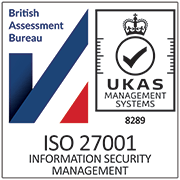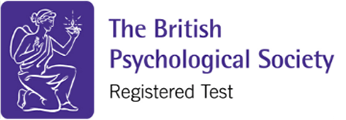Listen up, there’s some exciting research news to share.
Today, I have some very exciting news to share – we have recently released our latest research report…Team effectiveness in the workplace 2025…which quite frankly has a LOT of really interesting and exciting information in it (it’s a 60 pager!). Please get in touch with the team if you’d like a copy.
Over the next couple of episodes, I’m going to be taking you through some of the highlights from the report – the key findings, the so whats and the what nexts.
First of all, I’ve said that the report relates to team effectiveness in the workplace, which it very much does. But I should also let you know that the report is based on data from just under 1,600 team members (collected using StrengthscopeTeam™), as well as just under 1,300 leaders (collected using StrengthscopeLeader™). So today, I want to go through some of the key leadership findings from our research.
And I’m going to include:
- What energises leaders the most and least
- What about differences by industry and job function
- How this has changed over time
- What leaders do best (and worst)
- The perception gap
- The most significant factors in leadership effectiveness
- Summary and next steps
What energises leaders the most (and least)
Our research reveals that the highest-ranking strengths for leaders are Leading (enjoying influencing and leading others towards a goal), then Decisiveness (being energised by making quick, clear and confident decisions) and Critical thinking (getting energy from breaking down and systematically evaluating problems and arguments). Then, Efficiency (enjoying taking a methodical, planful approach to achieving tasks), Emotional control (drawing energy from ensuring that emotions are directed towards remaining calm and productive) and Resilience (being energised by tough challenges and setbacks).
Leaders report gaining the least amount of energy from Optimism (believing that the future is bright and remaining upbeat about it), Self-confidence (being energised by believing in their capacity to get the job done) and Self-improvement (being energised by learning and self-development).
This varies by job function and industry sector and there is lots more on that in the report. For example, I love that Efficiency, Emotional control and Critical thinking are most energising to leaders in Construction while in Health and Social Work, leaders are most energised by Compassion, Leading and Collaboration.
And across job functions, while Sales leaders report being most energised by Relationship building, Persuasiveness and Leading, leaders of Finance functions report being most energised by Efficiency, Critical thinking and Resilience.
There’s so much more on this I could share but you need the report to see the whole picture.
Have leadership strengths changed over time?
In our report, we looked at comparative data from 2019 (pre-pandemic), which includes just over 1,000 leaders with comparable demographic profiles to our 2024 sample. This dual-period analysis allowed us to identify trends and changes in leadership strengths over time.
Given the stable nature of strengths in Strengthscope, the top three and lowest three strengths have not changed since the pandemic.
However, Efficiency, Common sense and Compassion have ranked significantly higher compared to the pre-pandemic sample.
So leaders today are more likely to gain energy from planning, making decisions based on past success and caring for others’ well-being than in pre-pandemic times.
What do leaders do best (and worst)
Our StrengthscopeLeader™ report looks at 16 behaviours of effective leaders across 4 clusters: Sharing vision (setting a clear shared vision for success), Sparking engagement (empowering, inspiring and developing people), Skilfully executing (setting goals, coaching and giving feedback to make sure tasks are completed) and Sustaining progress (continuous improvement and innovation through learning and experimentation)
In our assessment, we ask leaders to rate themselves on these 16 behaviours and collect feedback from their nominated stakeholders. What we found is that both leaders and their raters score leaders highest on Sparking engagement, followed by Sustaining progress, Sharing vision, and finally, Skilful execution.
This means that leaders and raters see empowering and inspiring people as leaders’ most effective leadership skill areas, followed by delivering continuous improvement, setting a clear vision for success, and finally, delivering clear messages and feedback on performance. And, just like with their strengths, leaders underestimate how effective they are in all areas of leadership skill.
The perception gap
It’s with heavy heart that our research shows that the average perception gap between leaders and raters has grown 75% since 2019. This gap has increased yearly since the pandemic and is a combination of raters improving their ratings of leaders and, to a lesser extent, leaders reducing their self-ratings. So leaders believe they are slightly less effective than pre-pandemic (particularly in skillfully executing). And their stakeholders believe leaders are significantly more effective than they were pre-pandemic (in all areas).
The most notable increases from raters focus on Sparking engagement and Sustaining progress. Promoting an open and respectful work environment and recognising and celebrating effort and achievement fairly has been a real focus for leaders over the past few years, and, according to their stakeholders, this is being successfully delivered. Much of this upswing relates to building and maintaining psychological safety within teams.
The most notable decreases from leaders are about pushing teams to excel, as well as including and involving people. Particularly regarding improving accountability and dealing with poor performance, simplifying how they communicate their vision to stakeholders, and keeping people focused on the long game. They may relate to some leaders believing that this is more difficult to achieve post-pandemic due to the growth of the hybrid workplace.
Most significant factors driving leadership effectiveness
To prioritise the most important leadership behaviours, it is worth examining the strongest relationships between leader behaviours and overall leader effectiveness (according to raters, as they rate each leader’s effectiveness from 1-10).
On doing this, we can see that four of the five standout predictors of leadership effectiveness come from the Sharing Vision habit area and one from Sustaining progress. These include, in descending order of significance:
- Sharing vision: Setting strategic goals based on a good understanding of the organisation’s changing environment
- Sharing vision: Inspiring others with a simple, energising and realistic vision of what success could look like
- Sharing vision: Ensuring a strong customer/service-based strategy that builds trust and loyalty
- Sustaining progress: Encouraging people to be open to change and develop their capabilities to meet future requirements
- Sharing vision: Keeping people and stakeholders focused on the bigger picture and longer-term priorities.
It is relevant that four of five of the leader habits that are most closely linked with judgements of leadership effectiveness fall into the habit area ‘Sharing Vision’. Presenting a clear, simple vision linked to a strategy that relates to the team or organisation’s context provides a leader’s stakeholders with clarity on the direction of travel, inspiration for the journey ahead, as well as confidence in the leader’s competence to achieve the outcome.
Our advice to leaders is to spend time building a compelling strategy and, most importantly, articulating it in a straightforward and inspiring way to stakeholders. It is often only the leader who is in a position to provide this connection to the future, to keep people focused on the bigger goal, to ensure that they remain agile to meet the needs of future requirements and to understand the needs of customers or the service provided to stakeholders.
As a leader, focusing on creating and sharing your vision creates the bedrock to spark engagement, enable progress, and ultimately create a sustainable team or organisation over time. So start here.
Summary and next steps
Leaders have had to deal with a lot of changes over the past five years – often with limited support and little opportunity to hone their skills in managing people. If leaders are not aware of their innate strengths, they may not be aware of their impact either – and this is critical for productive and effective teams.
We know that the impact of hybrid and remote working, since the pandemic, with all its benefits, can negatively impact the communication between managers and team members if the change is not handled appropriately. Leaders should be less self-critical. It’s time for leaders to recognise their strengths and skills and continue to build on the strong foundations they have laid post-pandemic. Their stakeholders are noticing leaders’ hard work, and leaders can afford to be a little less tough on themselves (while of course recognising that there is always further work to do).
When HR and L&D teams are looking into building skills for leaders, they often look at gaps in knowledge as well as weaknesses and try to close those gaps. While this approach can be appropriate at times, there is immense value in understanding and doubling down on the strengths of your leaders. By understanding what energises them and what they’re good at, HR and L&D teams can utilise these more effectively and deliver better business outcomes.
To support their development journey, a clear next step for leaders is to collect regular feedback from their colleagues based on how effectively they are using their strengths and skills, to address the risk areas and to build on the positives.
When it comes to leadership skills, their followers say that leaders are most effective at Sparking engagement (that is, empowering and inspiring people), followed by delivering continuous improvement, setting a clear vision for success, and finally, delivering clear messages and feedback on performance. This shows a very clear roadmap for what leaders need to focus on to improve their impact.
But remember that the top predictors of leadership effectiveness mostly relate to Sharing vision (and leaders aren’t the greatest at this). Our advice to leaders is to spend time building a compelling strategy and, most importantly, articulating it in a straightforward and inspiring way to stakeholders.
I hope that this has been a useful research update and summary of approximately half of what our research report covers? As I say, if you’re interested to receive the full report, please do get in touch and we’ll be happy to provide a full copy.













